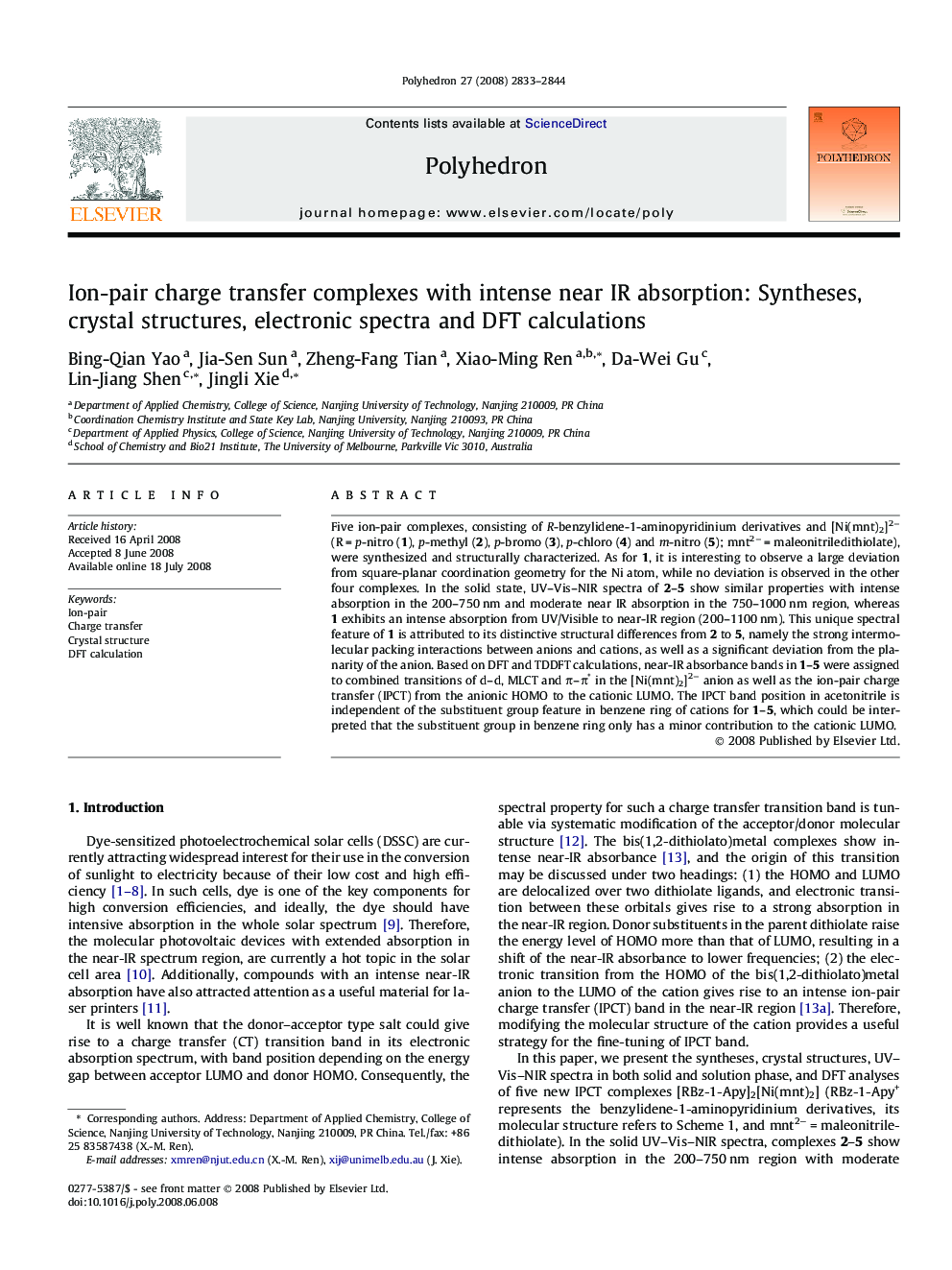| Article ID | Journal | Published Year | Pages | File Type |
|---|---|---|---|---|
| 1340347 | Polyhedron | 2008 | 12 Pages |
Five ion-pair complexes, consisting of R-benzylidene-1-aminopyridinium derivatives and [Ni(mnt)2]2− (R = p-nitro (1), p-methyl (2), p-bromo (3), p-chloro (4) and m-nitro (5); mnt2− = maleonitriledithiolate), were synthesized and structurally characterized. As for 1, it is interesting to observe a large deviation from square-planar coordination geometry for the Ni atom, while no deviation is observed in the other four complexes. In the solid state, UV–Vis–NIR spectra of 2–5 show similar properties with intense absorption in the 200–750 nm and moderate near IR absorption in the 750–1000 nm region, whereas 1 exhibits an intense absorption from UV/Visible to near-IR region (200–1100 nm). This unique spectral feature of 1 is attributed to its distinctive structural differences from 2 to 5, namely the strong intermolecular packing interactions between anions and cations, as well as a significant deviation from the planarity of the anion. Based on DFT and TDDFT calculations, near-IR absorbance bands in 1–5 were assigned to combined transitions of d–d, MLCT and π–π∗ in the [Ni(mnt)2]2− anion as well as the ion-pair charge transfer (IPCT) from the anionic HOMO to the cationic LUMO. The IPCT band position in acetonitrile is independent of the substituent group feature in benzene ring of cations for 1–5, which could be interpreted that the substituent group in benzene ring only has a minor contribution to the cationic LUMO.
Graphical abstractFive ion-pair complexes, consisting of R-benzylidene-1-aminopyridinium derivatives with [Ni(mnt)2]2− (R = p-nitro (1), p-methyl (2), p-bromo (3), p-chloro (4) and m-nitro (5); mnt2− = maleonitriledithiolate), exhibit an intense absorption in near-IR region.Figure optionsDownload full-size imageDownload as PowerPoint slide
